The sheer elasticity of Ford Performance is a remarkable thing.
Within the space of a year, the Blue Oval’s fast car division knocked out one of the most intoxicating supercars of its generation, then quickly followed it up with the best affordable performance car money can buy.
In the same way that a coastline seems to get longer the more accurately you measure it, the gulf that divides the GT and the Fiesta ST becomes more and more preposterous the closer you look. Consider this: while the ST counts Toyotas, Vauxhalls, Volkswagens and Suzukis among its rivals, the GT costs about the same as a mid-range McLaren, plus a mid-range Ferrari. And if you were to take every penny you had set aside for a GT of your own and spend it instead on Fiesta STs, the 22 hatchbacks that you’d become the proud owner of would weigh the same as four fully grown African elephants.
You get the picture. The Ford GT is a lot more expensive than the Fiesta ST, although at £420,000 it is also a lot more expensive than most other supercars. And it isn’t even as though Ford Performance is blagging its way through building two such disparate cars. No, it’s pulling it off in some style, neither one feeling like a leap too far or a token effort. Somehow, the GT and the ST both exist in the Ford Performance heartland.
It was only a matter of weeks ago that we crowned the Fiesta ST the finest sub-£30,000 performance car of 2018. A fortnight before that, we awarded it a four-and-a-half-star road test rating, which rather makes the four stars we deemed the GT worthy of 12 months previously seem a touch humiliating. Is the GT really shown up by the ST? We’ll come to that. With the two cars parked alongside each other, the stark reality is that the GT is so otherworldly looking, so malevolent, that in its company the ST almost looks pathetic, like a parasitic remora fish clinging to the flank of a great white shark. Actually, it looks as though somebody has turned up to our photoshoot uninvited and parked right in the way.



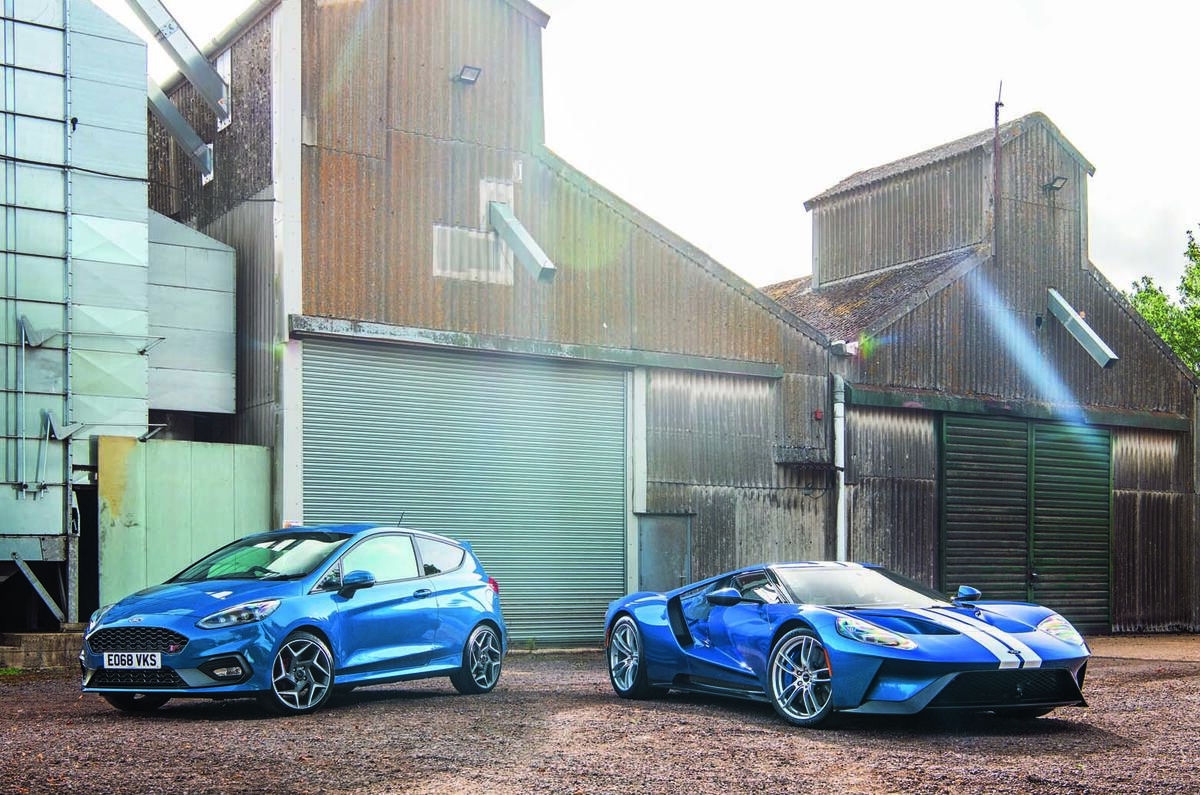
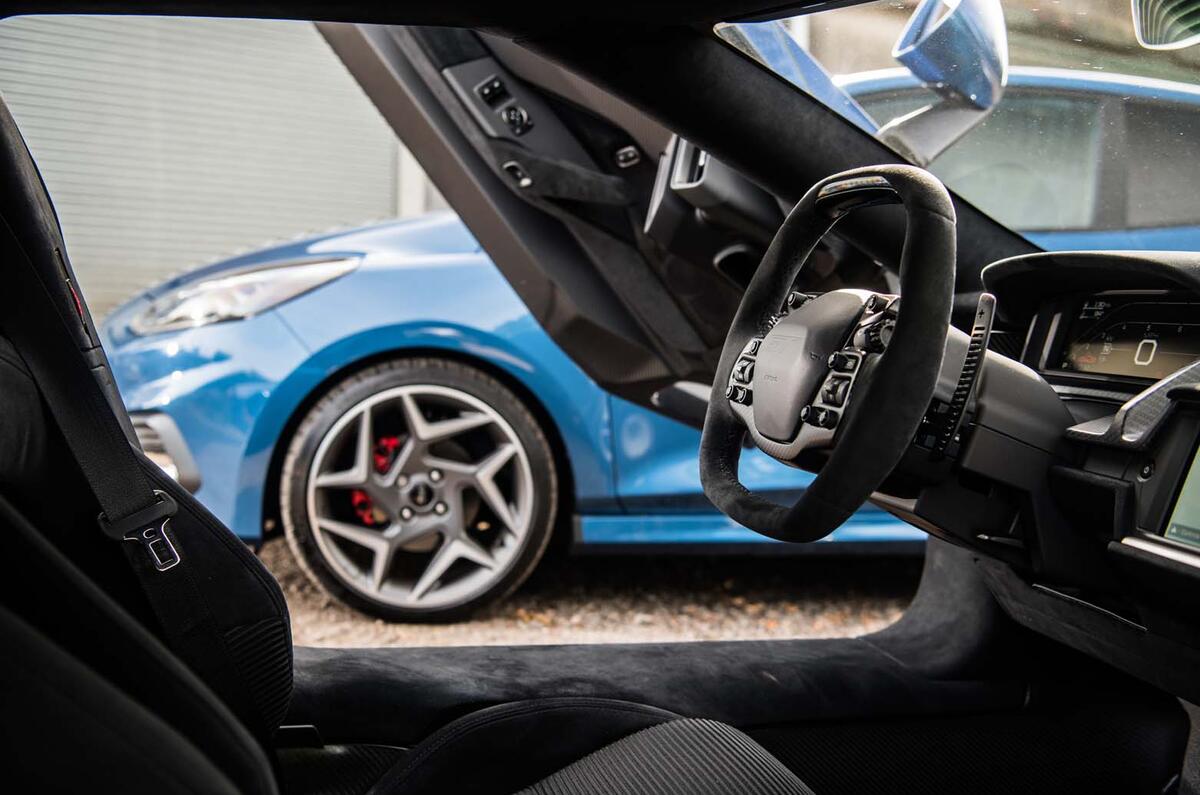
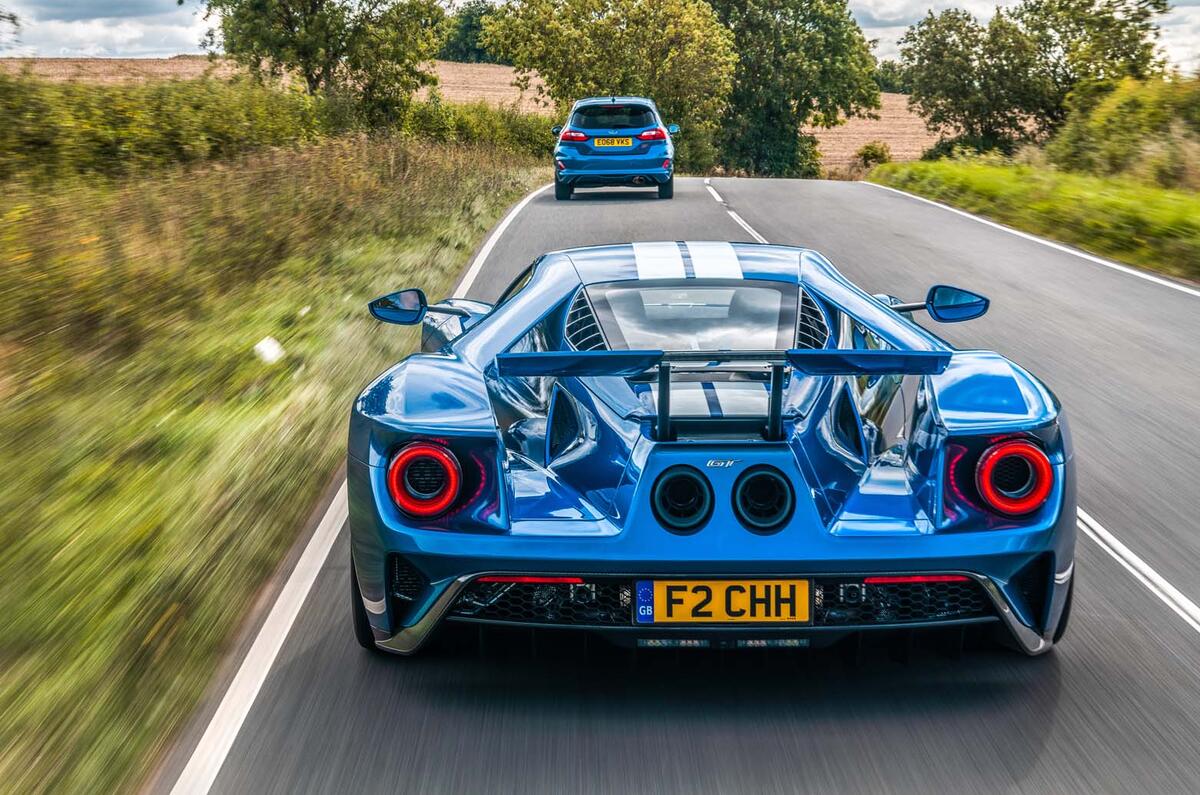





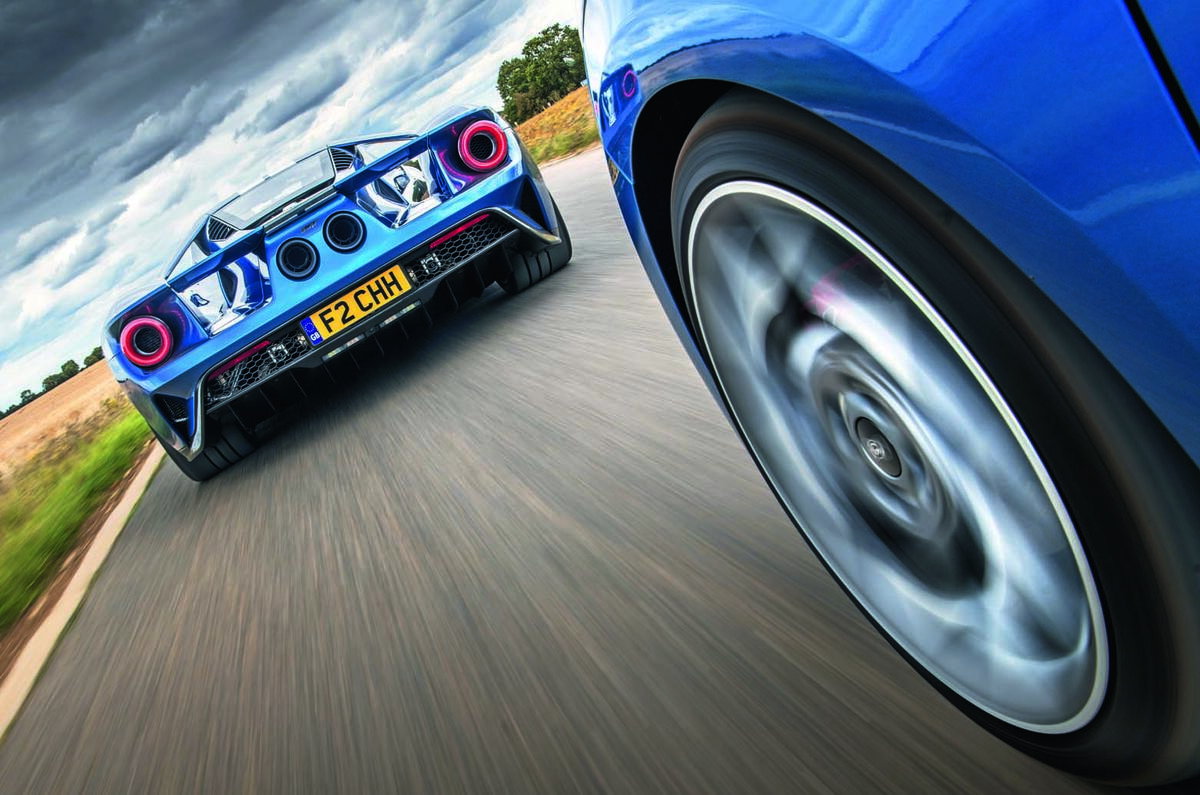
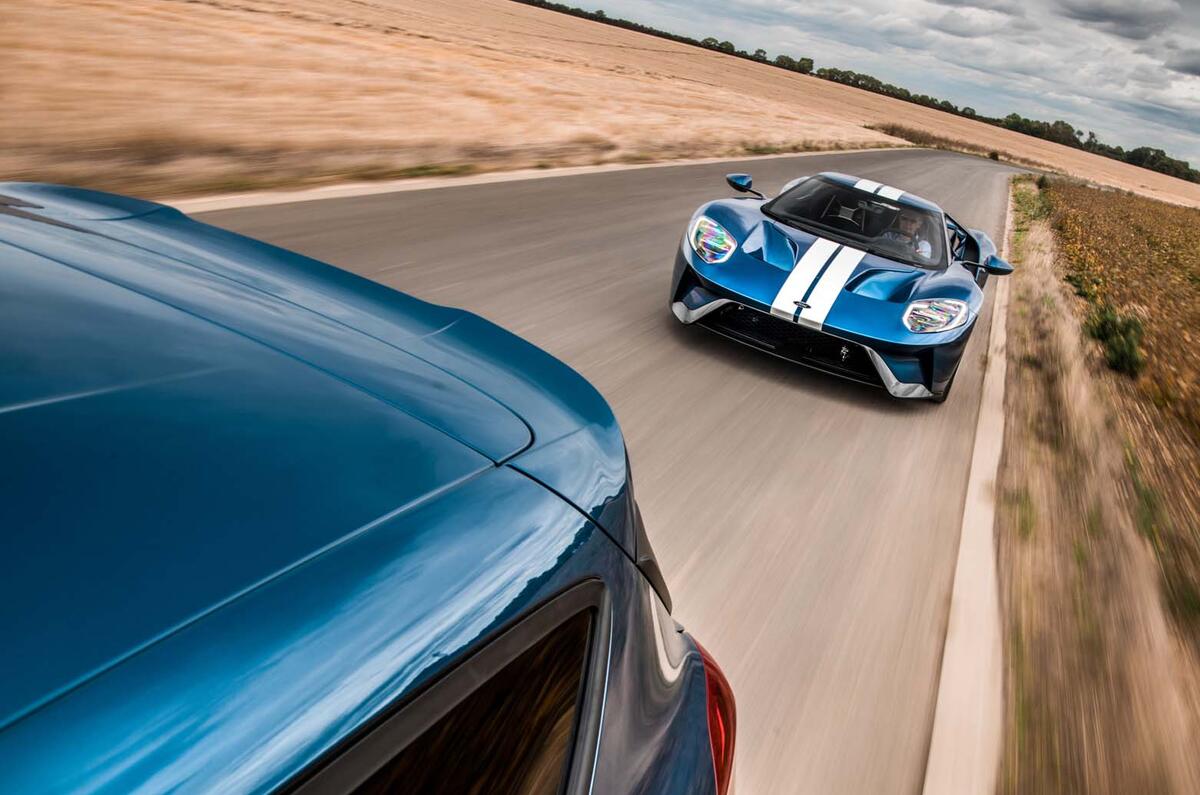
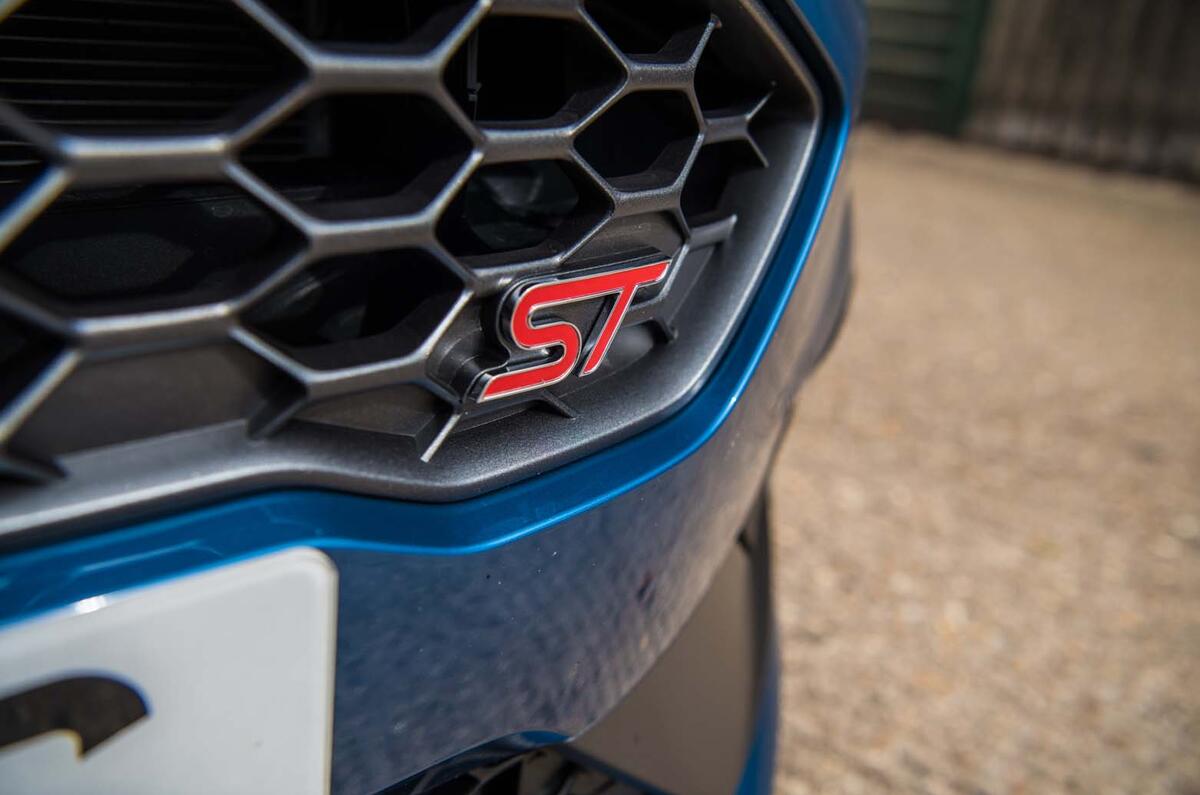
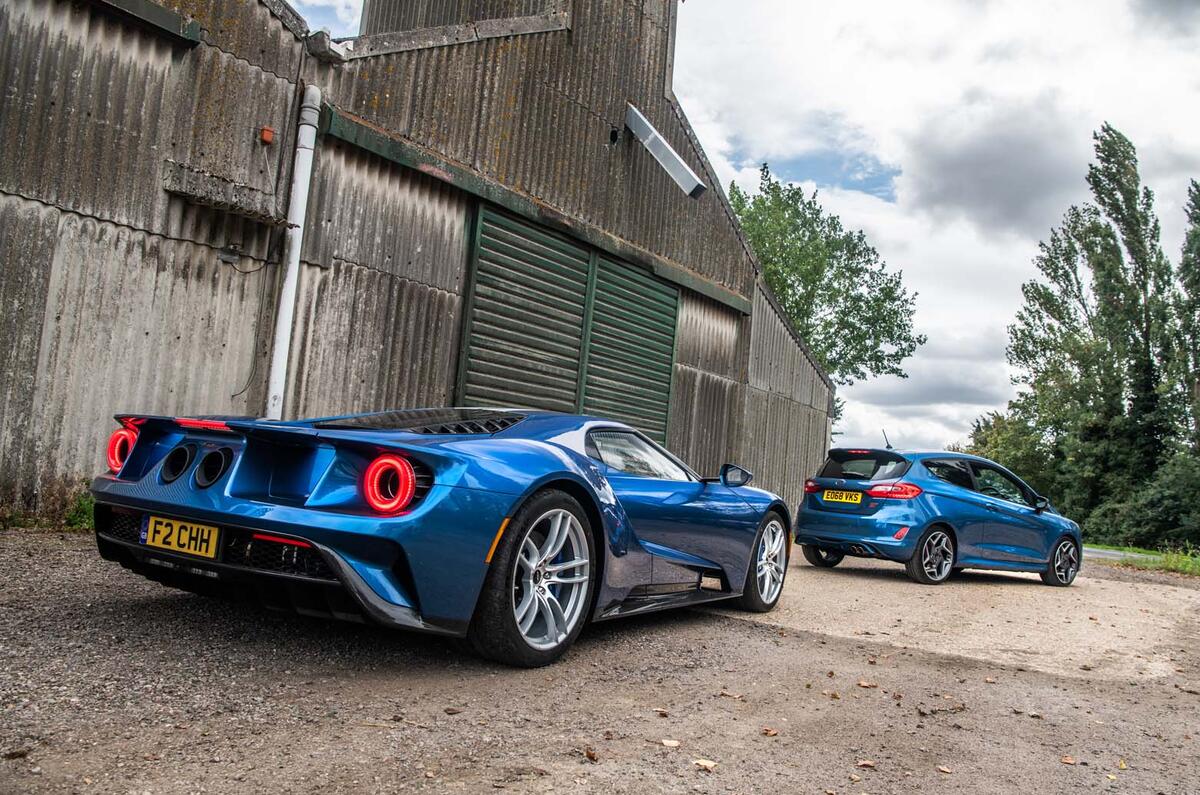




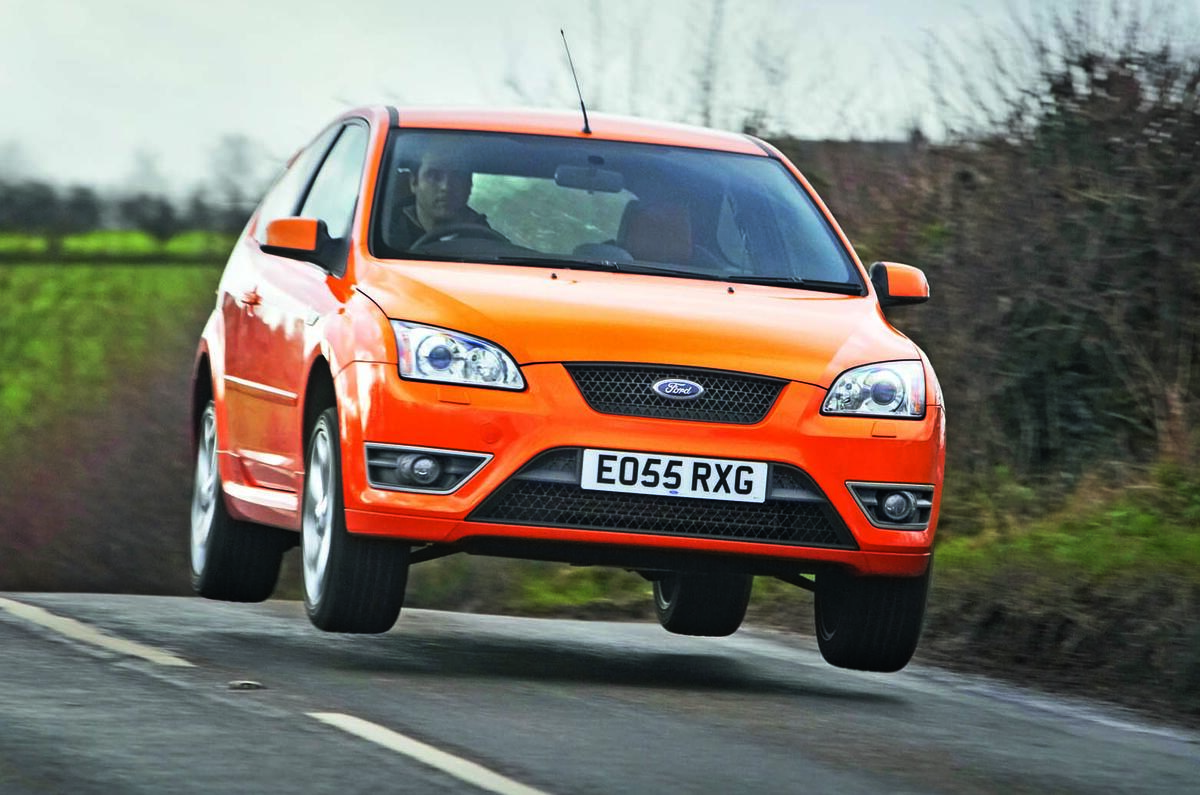

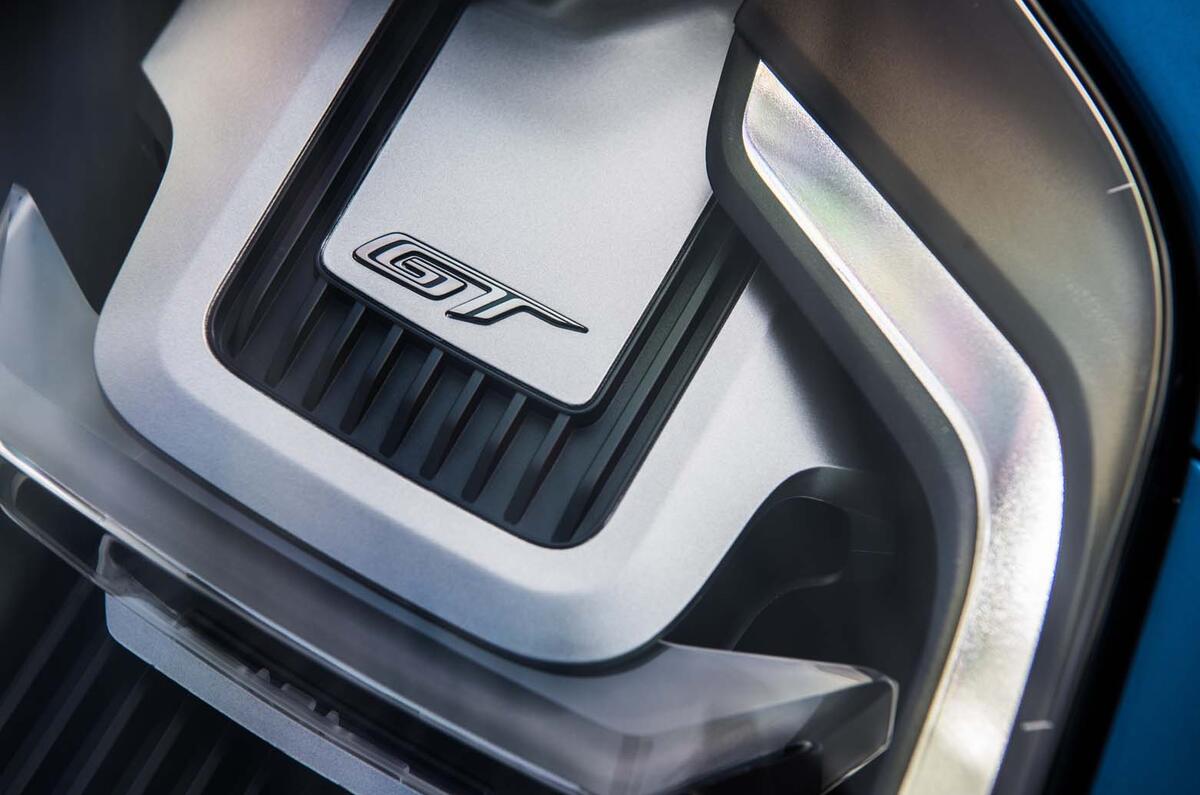






















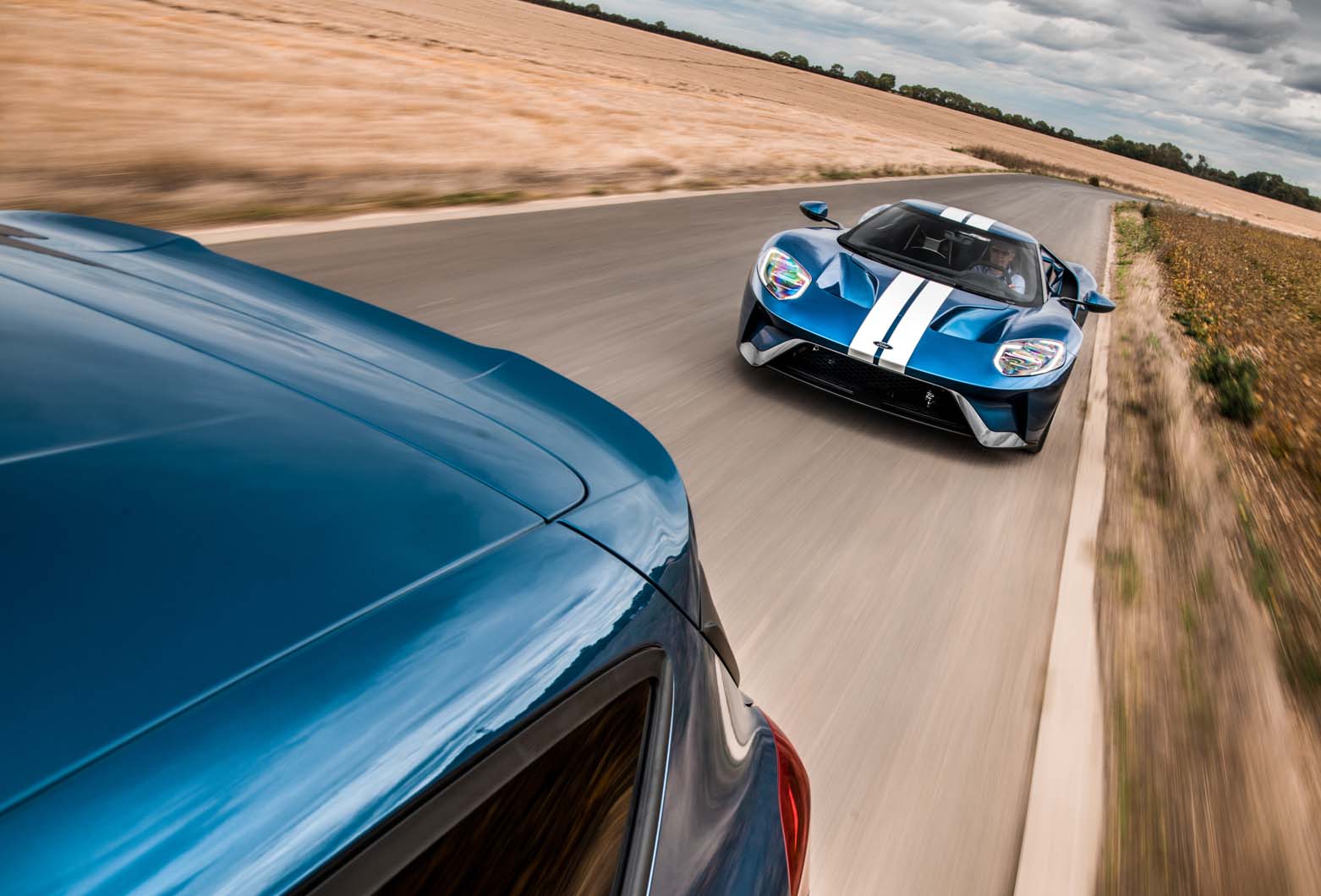


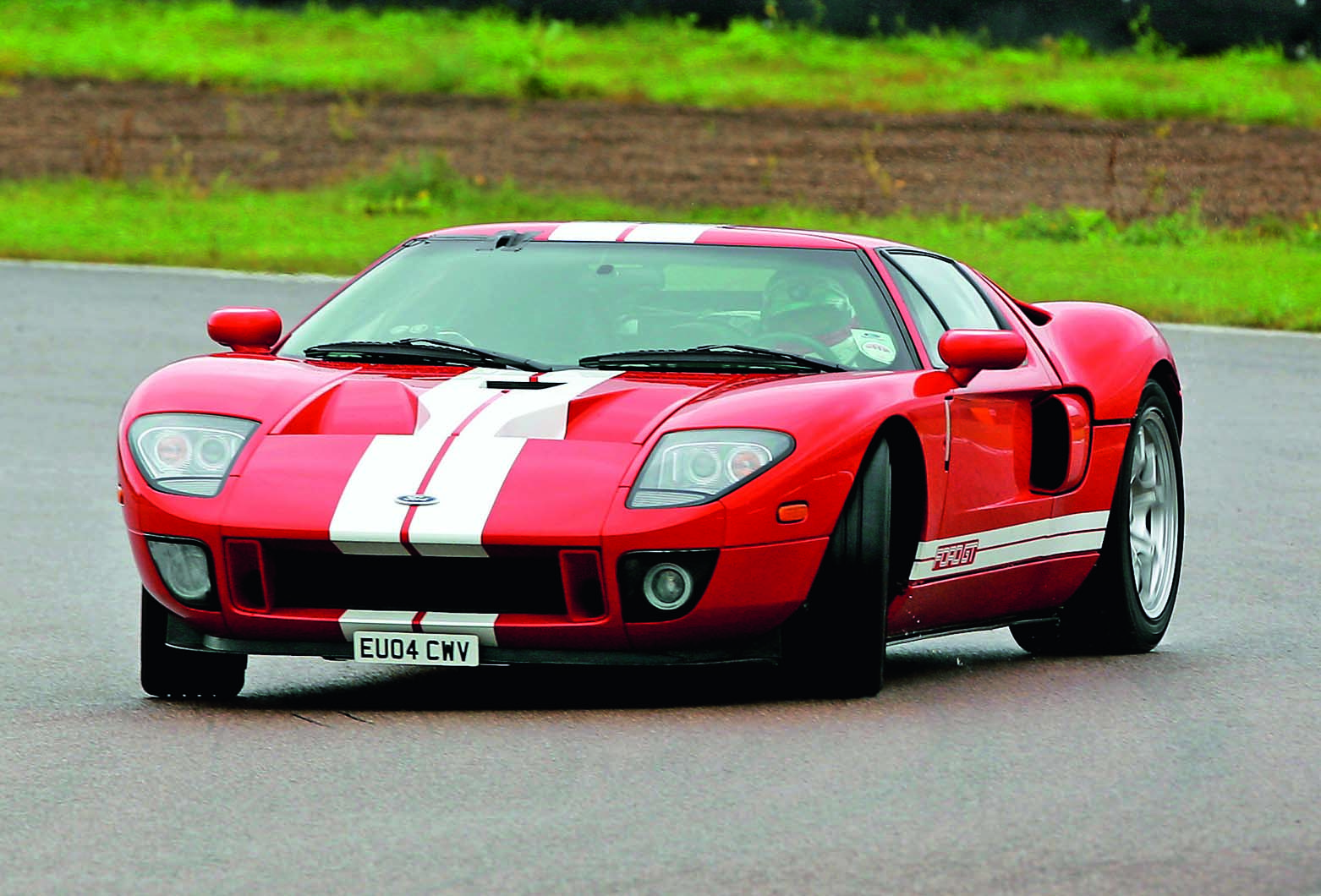




Join the debate
Add your comment
The Ford GT...
must have instilled mucho envy with car designers. It is that special, significant and iconic. It makes other exotic cars look like overdesigned look-at-me posers. With the possible exeption og Koenigsegg.
I Loved this Ford GT
I'm in love with the Ford GT, in blue it looks even more beautiful! como fazer dindin gourmet para vender
motorsport heritage
The problem is Renault, Honda etc continue to progress at a top level in Motorsport. FORD on the other hand, other than dipping in and out of rallying, only have Heritage, from decades ago!
xxxx wrote:
This is true